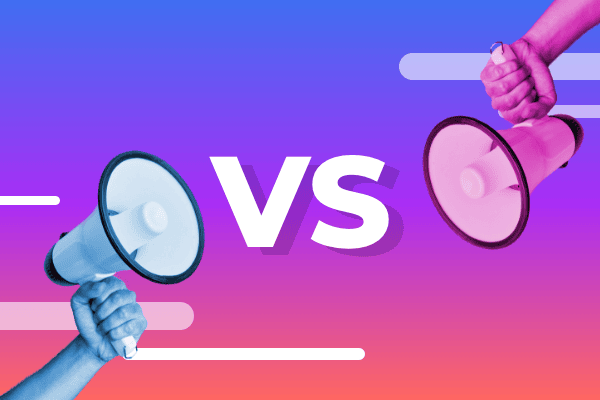Summary
Marketers face significant challenges as they transition away from third-party cookies, with many feeling unprepared and impacted by data privacy changes. One area marketers will need to adapt is their targeting and bidding strategies. This, the third post in our post-cookie series, explores these tactics and provides insights to help marketers stay ahead of the curve.
Read the entire Adapting to a Post Cookie World series
- Crafting a Winning Post-Cookie Game Plan: Three Essential Principles
- How to Adapt Research and Planning for the Post-Cookie Marketing Landscape
- Precision Marketing in the New Age: Targeting and Bidding Beyond Cookies
- Redefining Ad Creative and Personalization Best Practices in the Post-Cookie World
- Making Marketing Measurement and Optimization Work Without Cookies
Marketers face a significant challenge as they transition away from third-party cookies, with more than half (54%) feeling only somewhat or not very prepared for this change. On top of that, 84% report that data privacy changes affected their strategy in 2023.
How confident do you feel about your company’s cookieless game plan?
Welcome back to our Adapting to a Post-Cookie World series. Over the last few years, a lot has been written about why consumer data limitations have been implemented, but there’s not been much solid advice on how to evolve and adjust to these changes. This series explores likely areas within the campaign lifecycle that will be impacted and some advice on how to address those challenges.
Our first post, Crafting a Winning Post-Cookie Game Plan: Three Essential Principles, offered three guiding tenets to help marketers navigate a cookieless future. In our second post, How to Adapt Research and Planning for the Post-Cookie Marketing Landscape, we explored how businesses can learn about their audiences and determine the best strategies to reach and engage them while embracing privacy.
Today, we’ll focus on the next step in the campaign lifecycle: how to adapt targeting and bidding strategies for a post-cookie future. If research and planning build a solid foundation for your strategy, then adjusting targeting and bidding to account for the loss of third-party data lays the cornerstones for a future-proof digital advertising approach.
Here are five targeting and bidding areas that will be heavily impacted by the inevitable loss of third-party cookies, along with some tips and expert insights into how to stay ahead of the curve.
Behavioral targeting will be less precise
Losing third-party cookies will make targeting customers across the web much harder, and 81% of marketers acknowledge that their activities depend on these cookies to some extent. With third-party cookies, marketers could fairly easily “follow” consumers around the web and serve tailored ads based on their online behavior (i.e., pages viewed, products put into carts, etc.)
When the third-party cookie finally crumbles, marketing may suffer from a lack of relevance and effectiveness since behavioral targeting has long been a central strategy for offering targeted ads based on individual interests and needs.
- Leverage alternative data sources from loyalty programs, surveys, and customer feedback to inform behavioral targeting. These sources can provide valuable insights into customer preferences and behaviors without relying on third-party cookies.
- Collaborate with publishers with access to rich first-party data to maintain precision in targeting. This collaboration can help bridge the gap left by the loss of third-party data.
How walled gardens can help: Walled gardens like Google and Meta have a deep understanding of the preferences and online behaviors of hundreds of millions of logged-in users. This data is inherently privacy-safe because it is never directly shared with advertisers. The walled garden publishers’ rich data ecosystems provide extensive behavioral data within their platforms, making them increasingly valuable for precise targeting without breaking consumer data best practices.
Harder to leverage conversion signals to refine bidding
Without third-party cookies, accurately tracking conversions becomes more challenging. Most marketers understand the critical importance of accurate bidding in auction-based media, which has become the norm for digital marketing. If you bid too low, you won’t participate in enough auctions; bid too high, and you risk wasting your budget. Effective bidding is about hitting that sweet spot where your bid is high enough to secure ad impressions but low enough to maximize your budget’s reach.
Conversion signals have always been considered among the most important signals in bidding decisions. When you know what is and isn’t working, you (or your AI-bidding systems) can bid higher on ad impressions that drive return and lower on those that don’t. Third-party cookies have long been the backbone of this feedback loop; without them, it will be harder to ensure proper bidding.
- Utilize enhanced conversions to securely collect and send user data for more accurate bid adjustments. This helps maintain performance metrics even without third-party cookies.
- Adopt conversions API to allow better performance tracking by matching back user attributes tracked in your CRM. This enhances the accuracy of conversion data used for bidding strategies.
How walled gardens can help: Walled gardens like Google and Facebook have developed solutions such as enhanced conversions and conversions API to help advertisers maintain accurate conversion tracking and optimize their bidding strategies using first-party data.
Real-time bidding will become less efficient
While programmatic vendors are working hard in the background to implement an alternative ID approach, it’s likely to never rival the value of what a cookie-rich environment could accommodate. At this point, just about every ad channel has an auction-based component, and real-time bidding relies heavily on instant user information processing with third-party cookies at the core.
The loss of third-party cookies will make accessing insights about demographics and search behavior trends harder. Without these insights, there is a greater potential for ad wastage and an overall decrease in the ROI of ad spending since less accurate insights mean that ad targeting will become less specific and more generalized.
- Explore alternative real-time bidding technologies that integrate first-party data to identify high-value users. Analyzing your user data can help deliver relevant ads based on their interests and content within your owned media.
- Consider private marketplace deals (PMPs) to access premium ad inventory, improve targeting accuracy, and ensure efficient bid management.
How walled gardens can help: They maintain their own real-time bidding platforms with access to rich first-party data about their logged-in users, enabling more efficient and effective real-time bidding. Amazon, for instance, has access to premium insights on user demographics and purchase behavior. It also offers advertisers access to many off-site properties, including websites like IMDb, Twitch, and Zappos, and a broad social media reach.
Segmenting audiences will become challenging
With the phase-out of third-party cookies, marketers will find it more difficult to segment audiences effectively. Traditional methods that rely on extensive cross-site tracking will no longer be feasible, leading to broader and less defined audience segments.
One of marketing’s best practices is segmenting audiences into smaller groups, which can then be targeted with more relevant messaging and bidding set at the proper price. This lack of precise segmentation can lead to inefficiencies in ad spending as targeting becomes less accurate. As a result, campaigns may see reduced conversion rates and increased cost per acquisition.
- Rely on first-party data for sophisticated segmentation strategies. First-party data provides direct access to customer demographics, behaviors, preferences, and purchase history. This allows marketers to create highly specific segments based on actual interactions with their brand.
- Marketers can foster interaction through loyalty programs and other customer engagement initiatives to gain better insights. Marketers can tailor messaging, offers, and recommendations for more relevant and engaging experiences by understanding individual customer journeys.
How walled gardens can help: They maintain detailed user profiles and often have robust data around loyalty programs within their platforms. These insights enable more precise segmentation, making them critical partners for personalized, cookieless targeting.
Seven out of 10 believe that privacy-centric targeting is sending digital advertising in the wrong direction

Targeting accuracy hindered by privacy regulations
As tracking users across multiple sites becomes more difficult, privacy-first targeting will become essential for maintaining effective marketing strategies. However, to truly grow first-party data beyond simple website captures, marketers must work to gain consumer opt-in messaging consent. To do this, they must build trust with their audience by being transparent about data usage and embracing more privacy-centric targeting options.
One of the privacy-compliant ways to reach internet users is via one of the oldest forms of marketing: contextual targeting. Contextual advertising involves placing ads on web pages based on the content of those pages. For example, an ad for sports shoes might appear on a webpage discussing the latest sports news. No cookies needed! This method respects user privacy while still ensuring that ads are relevant and engaging. 79% of consumers feel more comfortable with contextual ads than behavioral ads because they perceive contextual advertising as less intrusive and more relevant to their interests.
- Develop comprehensive consent management systems to ensure user data is collected and used in compliance with privacy regulations. This will help build trust and ensure your marketing practices are ethical and lawful.
- Transparency and trust: Build transparent data practices that communicate to users how their data is being used, fostering trust and loyalty. Clear communication about data usage can enhance user experience and engagement.
How walled gardens can help: Walled gardens offer access to next-level insights about audience demographics and preferences. For advertisers, they also provide advanced, AI-powered personalization tools, ensuring that the right message is served to the right user at the right time.
Targeting and Bidding Beyond Cookies
Planning for a cookieless future means rethinking the traditional methods of targeting audiences and bidding on ads online. Navigating away from third-party cookies might seem daunting, but it’s really a golden chance to shake things up and get creative. We’re moving towards a future where knowing your audience and respecting their privacy isn’t just nice to have—it’s a must. The tactics we’ve explored today are just the start.
Looking ahead, the real game changer will be how creatively we can connect with people, making every interaction more meaningful without snooping through their digital history. Yes, the world of digital ads is changing fast, but by getting ahead now, you can set your company up to lead in a market that values both innovation and integrity.
Coming Up Next
Now that we’ve covered building a solid foundation through research and planning and setting the cornerstones of a future-ready plan by adjusting targeting and bidding strategies, it’s time to get creative. In our next post, we’ll cover how a creative approach to a post-cookie world can add shine to your content strategy, making your marketing more compelling and personal than ever before.







